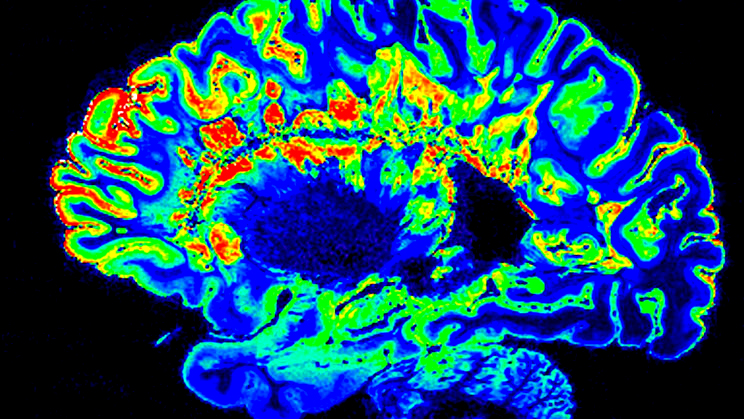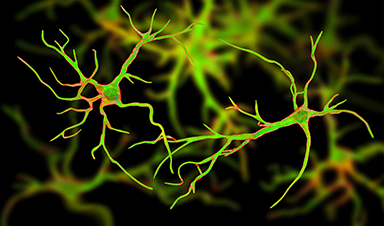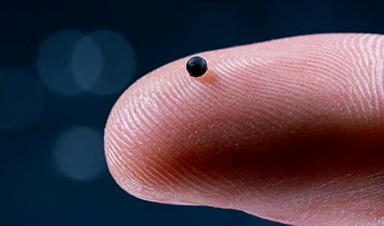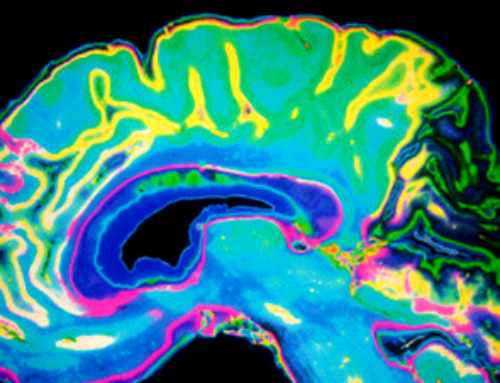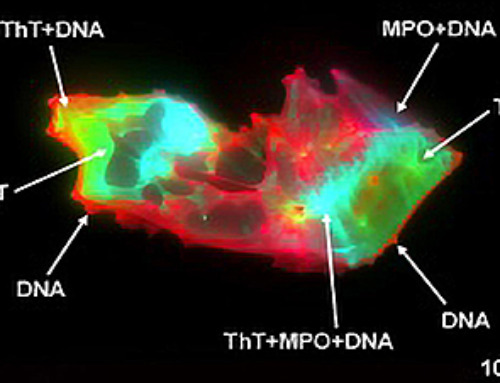Brigham and Women’s Hospital in Boston Massachusetts will soon begin Phase I trials of a nasal vaccine designed to prevent or slow the progression of Alzheimer’s disease (AD), a press release said. This is the first occasion when a nasal vaccine is being attempted for the disease, which affects more than six million people in the U.S. alone.
First seen in a patient way back in 1906 by Dr. Alois Alzheimer, the disease is a brain disorder characterized by the presence of clumps (amyloid plaques) and tangled fibers (tau tangles) between nerve cells (neurons) in the brain. Symptoms of the disease, which is usually seen in adults in their 60s, vary from memory issues to vision loss and even impaired reasoning.
The cause of the disease has long been questioned and researchers only recently believed to have come to the root of it. Research for a cure has been ongoing for decades, however, most interventions are aimed at reducing the severity of the symptoms. The vaccine to be trialed aims to change this.
The nasal vaccine trial
Howard L. Weiner, co-director of a center that studies neurological disease at Brigham has been researching the development of AD for over 20 years. Previous studies have shown that the immune cells in the body play a role in the removal of the amyloid plaques from the brain. Therefore, the researchers are using an immune modulator called Protollin to stimulate the immune system and remove the plaques.
Protollin is an intranasal agent derived by mixing specific cell components of different bacteria and is already used as an adjuvant, to generate greater immune response for other vaccines. The researchers are hopeful that by triggering the immune system, specifically the white blood cells from the lymph node located in the neck area, the vaccine will clear out plaques in AD patients too.
The trial will include 16 participants between the age of 60 and 85 years who have been diagnosed with symptomatic, early-stage AD, the press release said. Trial participants will receive two doses of the vaccine, one week apart. The main aim of the trial is to determine if the vaccine is safe and can be tolerated at the dosages planned. If successful, the same mode of treatment could be used for other neurodegenerative diseases, the press release said.
Interestingly, another possible treatment and vaccine strategy for AD was published earlier this month and will move to human trials soon.
News
A single shot of HPV vaccine may be enough to fight cervical cancer, study finds
WASHINGTON -- A single HPV vaccination appears just as effective as two doses at preventing the viral infection that causes cervical cancer, researchers reported Wednesday. HPV, or human papillomavirus, is very common and spread [...]
New technique overcomes technological barrier in 3D brain imaging
Scientists at the Swiss Light Source SLS have succeeded in mapping a piece of brain tissue in 3D at unprecedented resolution using X-rays, non-destructively. The breakthrough overcomes a long-standing technological barrier that had limited [...]
Scientists Uncover Hidden Blood Pattern in Long COVID
Researchers found persistent microclot and NET structures in Long COVID blood that may explain long-lasting symptoms. Researchers examining Long COVID have identified a structural connection between circulating microclots and neutrophil extracellular traps (NETs). The [...]
This Cellular Trick Helps Cancer Spread, but Could Also Stop It
Groups of normal cbiells can sense far into their surroundings, helping explain cancer cell migration. Understanding this ability could lead to new ways to limit tumor spread. The tale of the princess and the [...]
New mRNA therapy targets drug-resistant pneumonia
Bacteria that multiply on surfaces are a major headache in health care when they gain a foothold on, for example, implants or in catheters. Researchers at Chalmers University of Technology in Sweden have found [...]
Current Heart Health Guidelines Are Failing To Catch a Deadly Genetic Killer
New research reveals that standard screening misses most people with a common inherited cholesterol disorder. A Mayo Clinic study reports that current genetic screening guidelines overlook most people who have familial hypercholesterolemia, an inherited disorder that [...]
Scientists Identify the Evolutionary “Purpose” of Consciousness
Summary: Researchers at Ruhr University Bochum explore why consciousness evolved and why different species developed it in distinct ways. By comparing humans with birds, they show that complex awareness may arise through different neural architectures yet [...]
Novel mRNA therapy curbs antibiotic-resistant infections in preclinical lung models
Researchers at the Icahn School of Medicine at Mount Sinai and collaborators have reported early success with a novel mRNA-based therapy designed to combat antibiotic-resistant bacteria. The findings, published in Nature Biotechnology, show that in [...]
New skin-permeable polymer delivers insulin without needles
A breakthrough zwitterionic polymer slips through the skin’s toughest barriers, carrying insulin deep into tissue and normalizing blood sugar, offering patients a painless alternative to daily injections. A recent study published in the journal Nature examines [...]
Multifunctional Nanogels: A Breakthrough in Antibacterial Strategies
Antibiotic resistance is a growing concern - from human health to crop survival. A new study successfully uses nanogels to target and almost entirely inhibit the bacteria P. Aeruginosa. Recently published in Angewandte Chemie, the study [...]
Nanoflowers rejuvenate old and damaged human cells by replacing their mitochondria
Biomedical researchers at Texas A&M University may have discovered a way to stop or even reverse the decline of cellular energy production—a finding that could have revolutionary effects across medicine. Dr. Akhilesh K. Gaharwar [...]
The Stunning New Push to Protect the Invisible 99% of Life
Scientists worldwide have joined forces to build the first-ever roadmap for conserving Earth’s vast invisible majority—microbes. Their new IUCN Specialist Group reframes conservation by elevating microbial life to the same urgency as plants and [...]
Scientists Find a Way to Help the Brain Clear Alzheimer’s Plaques Naturally
Scientists have discovered that the brain may have a built-in way to fight Alzheimer’s. By activating a protein called Sox9, researchers were able to switch on star-shaped brain cells known as astrocytes and turn them into [...]
Vision can be rebooted in adults with amblyopia, study suggests
Temporarily anesthetizing the retina briefly reverts the activity of the visual system to that observed in early development and enables growth of responses to the amblyopic eye, new research shows. In the common vision [...]
Ultrasound-activated Nanoparticles Kill Liver Cancer and Activate Immune System
A new ultrasound-guided nanotherapy wipes out liver tumors while training the immune system to keep them from coming back. The study, published in Nano Today, introduces a biodegradable nanoparticle system that combines sonodynamic therapy and cell [...]
Magnetic nanoparticles that successfully navigate complex blood vessels may be ready for clinical trials
Every year, 12 million people worldwide suffer a stroke; many die or are permanently impaired. Currently, drugs are administered to dissolve the thrombus that blocks the blood vessel. These drugs spread throughout the entire [...]
